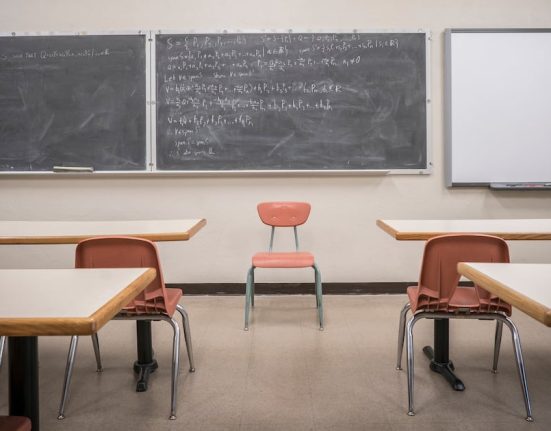Montana ranks 17th in the nation for limiting residential taxes, but its ratio of tax revenue that comes from properties ranks among the worst in the United States.
The result: A property tax revenue rift that has burdened landowners with funding the government, Missoula County Treasurer Tyler Gernant told the City Club this week.
Eric Bryson, executive director of the Montana Associations of Counties, said the last year has created a “tax revolt” from local county governments who argue the state needs to re-evaluate how it regulates cities and counties.
“There’s a perception of what’s theirs (the state) is theirs and what’s ours is ours on the local government side,” Bryson said. “Guess what, it is the same constituent driving the same road, accessing the same school that wants to drive safely over the same bridge, so we need to do a better job in developing those partnerships.”
People are also reading…
County officials and education experts said at Monday’s City Club meeting that a cooperative breakdown between state and local governments is driving taxes up for residential property owners.
Meanwhile, some local governments and school districts continue to struggle financially, despite the state hauling in a $2 billion surplus last legislative session.
Counties vs. state
The property tax debate sparked when the Department of Revenue reappraised all properties in Montana last summer, many of which saw massive value increases and in turn higher taxes.
Missoula County saw a 36% increase in home assessments, the Missoula County Commissioners wrote in November. Some residents face assessments more than 67% higher than the year before, the Montana Free Press reported.
Currently, the state sets all tax percentages and requires a few taxes for all landowners, while local governments can collect taxes using guidelines from the state legislature.
“In Montana, tax policy is set by the legislature, it does not allow us to take advantage of increased appraised values,” Bryson said, noting local governments can only increase taxes by half the rate of inflation.
This system boiled over last fall when the Montana Association of Counties asked the Montana Supreme Court to lower the state’s equalization mill number, which generates revenue for underfunded schools.
The counties argued the state could collect the same amount of money using fewer mils. Mils represent a taxable amount of value from a person’s property.
For instance, the state has levied 95 mils for school equalization from each property owner after a lawsuit successfully found the state was not allocating enough money.
But Montana’s counties argued that since people’s home values had risen so dramatically last year, fewer mils would be needed to reach the same amount of money.
Forty-nine of Montana’s 56 counties did exactly that, raising 77 mils in direct disagreement with the state. Bryson argued that the state should have changed the mils and the property tax percent rate to match modern trends.
But the Supreme Court disagreed, ruling unanimously that the state has the final authority to choose how much they levy for school equalization.
The decision means a vast majority of counties will have to raise the remaining 17 mils on their residents this spring.
Gernant, the county clerk and treasurer, said the new bills should be in the mail by the end of March, alongside the second half of tax bills.
But school equalization is just one piece of the property tax problem, which has underlying symptoms of a changing economy and a state legislature that has butted heads with local government.
Missoula’s property tax burden
Gernant said Missoula faced a worsening property tax problem because of its movement away from industry and not taking advantage of the tourism economy boom.
He said although most people from Gallatin County live in Bozeman, more than one-third of the county’s taxes come from the town of Big Sky, an enclave for wealthy people.
Billings and Yellowstone County might not have the same tourism economy, but its industry sector still has a large presence that brings in tax revenue. In Missoula, Gernant said the county does not have those same options.
“Missoula has been, for worse, on the forefront of this shift of the tax base, from commercial and industrial to residential, and its not just residential in Missoula, its your primary home. We don’t have a ton of people with second homes here.”
Missoula also has passed several ballot initiatives that come with a tax burden, like the new library and for Missoula Aging Services.
One problem statewide is the reliance on property taxes, Gernant said, because the system is a guaranteed way to bring in money. This has naturally led to state and local governments that rely on property taxes to raise revenue, Gernant said.
It has also been a key way to fund Montana’s school districts. And while schools get money from the state for their budgets, a loss of enrollment and COVID-era funds had led several districts to propose levies.
Missoula Public School District has four separate mil levies planned for the May election to help close the gap on an $8 million dollar budget deficit, the Missoulian reported.
The City of Missoula also placed a levy on the ballot to raise $7 million from voters for the Missoula Fire Department.
Solutions?
Bryson said many of these frustrations could be avoided if the state prioritized funding essential services first before other parts of its budget.
“If the state has the funds and prioritized education funding first we would not have to levy 95 mils,” Bryson said.
He said both schools and those who need property tax relief should be prioritized by the state Legislature.
The 2023 Legislature passed a tax credit for property taxes for the next two years to help alleviate the blow from rising property taxes and Gianforte’s newly formed property tax task force met for the first time last month to try to come up with additional solutions.
Gernant said the state still has a budget surplus of about $700 million that should go toward relieving property taxpayers. He also wanted to see the state create a “homestead” exemption, which would help those on a fixed income protect their property.







